- September 12, 2024
- Posted by:
- Category: New Innovations
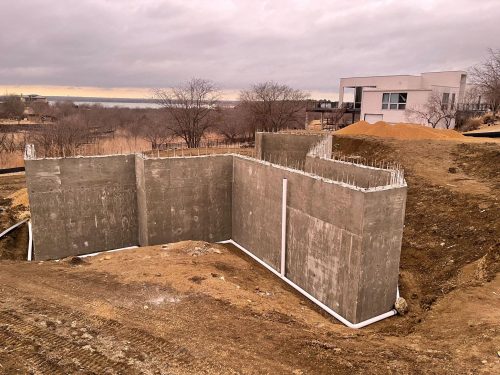
Managing water runoff effectively is crucial for protecting your property from potential damage. French drains are a vital component in the arsenal of water drainage solutions, designed to redirect water away from vulnerable areas like foundations, basements, and landscape features.
Imagine a simple yet powerful system that collects excess water and channels it away from your home, preventing problems such as flooded basements and soil erosion. This is precisely what a French drain does. By leveraging gravity and strategic installation, French drains serve as an efficient method to manage water flow.
For homeowners seeking professional assistance in basement waterproofing solutions, look no further thanThe Basement Kings, renowned experts in this field. They offer comprehensive services ensuring your basement remains dry and secure. Their expertise includes everything frompouring a basement slab properly, which can nearly eliminate water penetration from below, to providing essentialinspector services for thorough assessments.
Why should you care about French drains? Unchecked water runoff can lead to severe foundation issues, mold growth, and even structural damage. By understanding how French drains work and their benefits, you can make informed decisions to protect your property against these potential hazards.
Understanding French Drains
What Is a French Drain?
A French drain is an effective drainage system designed to redirect water away from areas prone to flooding or water accumulation. By channeling water through a trench filled with gravel and a perforated pipe, this system prevents water from saturating the soil around foundations, basements, and other vulnerable structures. The concept dates back to the mid-19th century when Henry Flagg French popularized it in his book on farm drainage.
Types of French Drains
Different types of French drains cater to various drainage needs:
Curtain Drains:
- Often used to address surface water issues.
- Installed horizontally across a slope.
- Positioned just below the surface to intercept and redirect water before it reaches lower areas.
Collector Drains for Groundwater:
- Designed for managing subsurface water.
- Typically deeper than curtain drains.
- Collects groundwater and channels it away from structures or low-lying areas.
Filter Drains for Wastewater:
- Utilized in wastewater management systems.
- Incorporates filtration elements to treat and purify wastewater as it moves through the drain.
- Essential for preventing contamination of groundwater sources.
Understanding these different types helps in choosing the right solution based on specific water management needs. Each type serves a unique purpose, ensuring efficient redirection and management of excess water.
The Importance of Basement Assessments
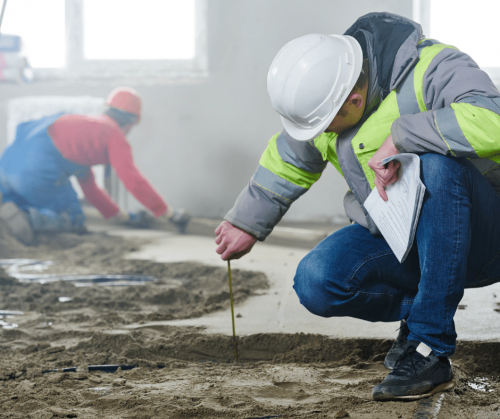
Given that French drains are often installed around basements, understanding how they interact with basement conditions is crucial. This is wherebasement assessments come into play. A thorough assessment can identify potential issues that may require repairs, which could be affected by factors such as the age of the building, as discussed in this article onhow age effects repairs.
Additionally, it’s important to note that some homeowners may be interested in purchasing basement insurance. In such cases, a detailed basement assessment is often necessary, providing valuable insights into the condition of the property.
For those looking to deepen their understanding of basement management and repair techniques, resources like theBasement College program offered by Basement Kings can be extremely beneficial. This program provides comprehensive knowledge about various aspects of basement maintenance and repair.
While French drains are an essential part of effective water management, understanding their role in relation to basement conditions and potential repairs is equally important.
How Do French Drains Work?
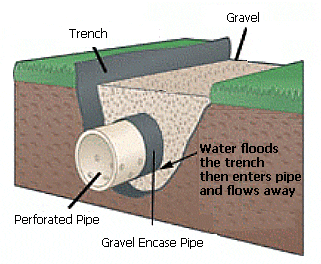
To understand how a French drain works, we need to look at its main parts and what they do in the drainage process. The system is designed to efficiently redirect water away from areas where it can cause damage, using a combination of materials and engineering principles.
Key Components of a French Drain System
Trench:
- A trench is dug to create a path for water to flow.
- The dimensions and slope of the trench are crucial for effective water movement.
Gravel:
- Gravel acts as a filter medium, surrounding the perforated pipe.
- It allows water to flow freely while filtering out debris.
Perforated Pipe:
- This pipe, installed within the trench, has small holes or perforations that allow water to enter.
- It directs collected water away from the area.
Filter Fabric:
- Placed around the gravel, this fabric prevents soil and sediment from clogging the system.
- It ensures long-term efficiency by maintaining clear pathways for water.
Water Collection Process
When water encounters the French drain system, it follows a path guided by gravity and the design of the components:
- Water Flow into Trench: Surface or groundwater seeps into the trench. The slope of the trench helps direct this flow towards the perforated pipe.
- Filtration Through Gravel: As water moves through the gravel, larger particles and debris are filtered out. This step enhances drainage efficiency and prevents clogging of the pipe.
- Entry into Perforated Pipe: The filtered water enters the perforated pipe through its small holes. The design of these holes ensures that only clean water flows into the pipe, minimizing blockages.
- Directed Outflow: Once inside the perforated pipe, water is directed away from vulnerable areas such as basements or foundations. The pipe typically leads to a safe discharge point like a dry well or storm sewer.
This cohesive functioning of trench, gravel, perforated pipe, and filter fabric forms an efficient gravel drainage system capable of managing significant volumes of water. By understanding how these elements work together, property owners can appreciate why French drains are effective solutions for preventing water damage.
For those looking to further enhance their property’s drainage system beyond just installing a French drain,sump pumps can be an excellent addition. These devices work in tandem with French drains by removing excess water that may accumulate in basements or crawl spaces.
Additionally, adopting certainbuilding methods can further improve your property’s resilience against water damage. For more detailed insights into such strategies, you might want to explore resources available in ourlearning centre.
In some cases where severe flooding occurs, utilizing products like Hydro Stop can provide an extra layer of protection. More information about this product can be found in ourHydro Stop brochure.
Lastly, regular maintenance and understanding of your drainage system are crucial for its longevity and effectiveness. Ourblog offers valuable tips and insights on maintaining your drainage systems effectively.
Installing a French Drain: Step-by-Step Guide
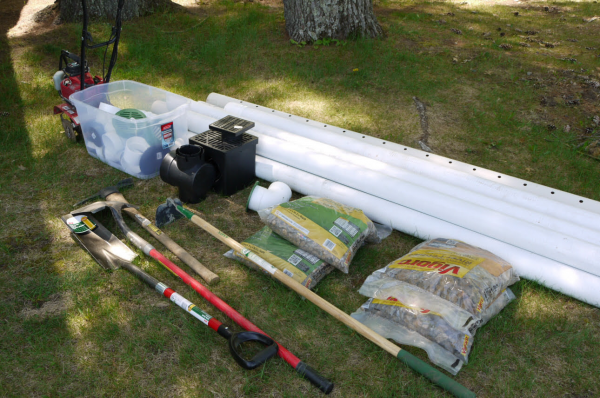
Step-by-Step Guide to Installing a French Drain
1. Planning and Design
- Assess the Area: Identify the locations where water accumulates and determine the best route for the drainage system.
- Check for Utilities: Before digging, ensure there are no underground utilities by contacting your local utility companies.
- Design Specifications: Plan the trench dimensions. Typically, trenches are 6-12 inches wide and around 18-24 inches deep. The slope should be about 1 inch for every 8 feet to ensure proper drainage.
2. Digging the Trench
- Mark the Path: Use spray paint or stakes and string to outline the trench’s path.
- Excavate the Trench: Dig along the marked path, ensuring you maintain consistent depth and slope. A trencher can make this task easier.
3. Lining the Trench
- Install Filter Fabric: Line the trench with filter fabric to prevent soil from clogging the gravel and perforated pipe. Leave enough excess fabric on each side to wrap over the top of the gravel later.
4. Adding Gravel
- First Layer of Gravel: Add a few inches of gravel at the bottom of the trench to create a base layer.
- Leveling Gravel: Ensure this layer is level and maintains the desired slope.
5. Positioning of Perforated Pipe
- Lay Down Pipe: Place a perforated pipe on top of the gravel bed. The perforations should face downward to allow water entry.
- Secure Pipe Position: Ensure that the pipe follows the slope of the trench for optimal water flow.
6. Filling with Gravel
- Cover Pipe with Gravel: Add more gravel over and around the pipe until it’s covered by several inches of gravel.
- Check Slope Consistency: Continuously check to ensure that both pipe and gravel maintain an appropriate slope.
7. Wrapping with Filter Fabric
- Cover with Fabric: Fold over excess filter fabric from sides to cover the top layer of gravel completely.
- Secure Fabric Edges: Secure edges with landscape pins if necessary to keep it in place.
8. Backfilling
- Add Soil Layer: Backfill with soil over the wrapped filter fabric up to ground level.
- Final Touches: Compact soil lightly and replace any removed turf or landscaping features.
DIY vs Professional Installation
DIY Installation
Pros:
- Cost Savings: Performing the installation yourself saves on labor costs.
- Flexibility: You can work at your own pace and make adjustments as needed.
Cons:
- Labor Intensive: Requires significant physical effort, especially when digging trenches manually.
- Potential Errors: Incorrect installation can lead to ineffective drainage or future issues.
Professional Installation
Pros:
- Expertise: Professionals bring experience and specialized tools, ensuring correct installation.
- Time Efficiency: Faster completion due to skilled labor and equipment use.
Cons:
- Higher Cost: Upfront costs are higher due to labor charges.
- Less Control: Less personal control over scheduling and specific details unless clearly communicated upfront
The Benefits of Having a French Drain System
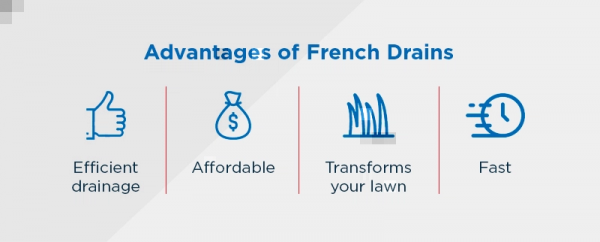
Installing a French drain system offers numerous advantages, primarily in its ability to safeguard your property from water damage. Here are some key benefits:
1. Protection from Hydrostatic Pressure
Hydrostatic pressure occurs when water builds up around your foundation, exerting force against it. Over time, this pressure can cause cracks and structural damage. French drains effectively alleviate hydrostatic pressure by redirecting water away from the foundation.
2. Prevention of Basement Flooding
Basement flooding is a common problem, especially in areas with high rainfall or poor drainage. French drains act as basement flooding solutions by:
- Redirecting surface water and groundwater away from the basement.
- Reducing the risk of water seepage through walls and floors.
In cases where flooding has already occurred, it’s advisable to consultbasement flood repair contractors who specialize in fixing basement leaks and concrete repairs.
3. Mold Growth Prevention
Standing water or damp conditions in basements create an ideal environment for mold growth, which can lead to health issues and structural damage. By keeping the area dry, French drains help prevent mold formation. For further moisture control, investing in abasement dehumidifier could be beneficial.
4. Cost Savings
Mitigating water damage through proper drainage solutions results in long-term cost savings. These savings come from avoiding:
- Expensive foundation repairs due to cracks and structural damage.
- Costs associated with mold remediation.
- Expenses related to replacing damaged belongings and finishing materials in the basement.
Key Takeaways
French drains offer multiple benefits:
- Protect foundations from hydrostatic pressure.
- Prevent basement flooding by managing water flow.
- Inhibit mold growth through effective moisture control.
- Save money on potential repairs and damages.
Investing in a French drain system not only enhances the longevity of your property but also ensures a healthier living environment by preventing unnecessary water-related issues. If you’re considering building structures like swimming pools which require specific ground conditions, it’s interesting to note thatit’s possible to build a swimming pool anywhere in Texas but not a basement, due to these unique soil and drainage requirements.
Maintaining Your French Drain for Optimal Performance
Regular maintenance of your French drain system is crucial to ensure its efficiency and longevity. Neglecting this aspect can lead to significant issues, including water damage and compromised drainage capabilities.
Importance of Regular Maintenance
A well-maintained French drain prevents water from pooling around your foundation, which helps avoid hydrostatic pressure and potential basement flooding. Consistent upkeep ensures that the system operates as intended, protecting your property.
Signs Your French Drain Needs Attention
Identifying problems early can save time and money. Look out for these common signs:
- Blockages: If water isn’t draining properly, there might be a blockage in the pipe or gravel.
- Slow Drainage: Water pooling or slow drainage indicates the system isn’t functioning efficiently.
- Unpleasant Odors: Foul smells could signify stagnant water or debris accumulation.
- Visible Damage: Cracks or erosion near the trench suggest structural issues.
Practical Maintenance Tips
Ensuring free flow in your French drain involves regular checks and cleaning. Here are some practical tips:
- Inspect Regularly: Periodically check the trench, gravel, and pipe for signs of wear and tear.
- Clean Out Debris: Remove leaves, dirt, and other debris that can accumulate in the gravel or pipe.
- Flush the System: Use a garden hose to flush out any build-up inside the perforated pipe.
- Check for Erosion: Ensure that soil erosion hasn’t exposed or damaged any part of the system.
- Professional Assessment: Consider annual inspections by experts like The Basement Kings to catch issues early.
By following these steps, you can maintain an efficient French drain system that continues to protect your property effectively.
-
Comparing Different Drainage Solutions: When to Choose a French Drain?
French drain vs. exterior drain — When addressing water drainage solutions, it’s essential to understand the distinctions between interior and exterior drainage systems.
Key Differences
1. Interior French Drains:
- Installed inside the property, typically in the basement.
- Designed to prevent water from seeping into living spaces by redirecting it to a sump pump or other discharge point.
- Effective for properties with persistent basement flooding or high groundwater levels.
- Often used in conjunction withinterior building products that are designed to withstand moisture and prevent damage.
2. Exterior French Drains:
- Positioned along the exterior perimeter of a building.
- Aim to intercept and redirect surface water and groundwater before it can infiltrate the foundation.
- Ideal for protecting foundations, landscaping, and preventing soil erosion.
When to Choose a French Drain
Selecting the appropriate drainage system depends on specific conditions and needs:
- Basements with Persistent Flooding: Interior French drains are highly effective in combating basement flooding by capturing water at the base of walls and floors and diverting it away.
- Foundation Protection: Exterior French drains help protect foundations from hydrostatic pressure and water damage by intercepting water before it reaches the foundation walls.
- Landscape Management: Exterior drains are beneficial for areas prone to water pooling or where soil erosion is a concern. They help maintain landscape integrity by managing runoff efficiently.
- Alternative Solutions:Dry Wells: These are suitable for areas with minor drainage issues where water can be temporarily stored underground. Retaining Walls: Useful in sloped terrains to prevent soil movement but less effective in actual water redirection compared to French drains.
Consider these factors when deciding if a French drain is the right solution for your property’s drainage needs. Proper assessment ensures optimal performance and long-term benefits.
Cost Considerations for Installing a French Drain System
Understanding the cost estimation for French drains is crucial before starting the installation process. Several factors influence the overall cost, making it essential to break down each component.
Factors Influencing Cost
Materials:
- Perforated Pipe: The main component of the French drain system. Prices vary based on material and diameter.
- Gravel: Important for filtration and drainage. Costs depend on quality and quantity needed.
- Filter Fabric: Prevents soil from clogging the system. Different grades impact pricing.
- Additional Supplies: Connectors, caps, and other fittings add to the total cost.
Labor Requirements:
- For DIY projects, labor costs are minimal but require time and effort.
- Hiring professionals incurs higher labor costs but ensures expertise and efficiency.
Trench Dimensions:
- Depth and width of the trench affect material quantities.
- Larger dimensions naturally increase both material and labor costs.
Site Conditions:
- Soil type, accessibility, and existing landscaping can complicate installation.
- Difficult terrains may require additional equipment, raising expenses.
Average Cost Range
DIY Projects:
- Materials: Expect to spend approximately $10-$30 per linear foot.
- Tools & Equipment: Renting specialized equipment might add another $100-$300.
- Total Estimate: Roughly $500-$1,500 for a standard 50-foot drain.
Professional Services:
- Materials & Labor: Combined costs range from $30-$75 per linear foot.
- Comprehensive Services: Includes consultation, installation, and post-installation checks.
- Total Estimate: Typically between $1,500-$3,750 for a similar 50-foot drain.
Investing in professional services often ensures a higher-quality installation with fewer long-term issues. For instance, hiring specialists such asTexas Basement Builders & Contractors could provide top-quality construction services that include not only French drain installations but also comprehensive basement services like waterproofing and repair. While DIY approaches can save money upfront, they require careful planning and execution to be effective.
Conclusion: Making Informed Decisions About Your Drainage Needs
Understanding What Is a French Drain and How Does It Work? is crucial for ensuring foundation protection and preventing water damage. Evaluate your specific drainage needs by considering:
- The layout and slope of your property
- Existing water issues, such as basement flooding or soil erosion
- Long-term maintenance requirements
Consulting with experts likeThe Basement Kings can provide you with tailored advice and professional installation services. This ensures your drainage system is both effective and durable, safeguarding your property for years to come.
Frequently Asked Questions
What is a French drain?
A French drain is a drainage system designed to redirect water away from vulnerable areas, such as foundations and basements. It typically consists of a trench filled with gravel and a perforated pipe that collects and channels excess water away from the property.
How does a French drain work?
A French drain works by using gravity to collect water through the perforated pipe located in a gravel-filled trench. The gravel acts as a filter, allowing water to flow freely while preventing debris from clogging the pipe. This system effectively redirects water away from areas prone to flooding.
What are the benefits of having a French drain system?
French drains protect foundations from hydrostatic pressure, preventing basement flooding and mold growth. They provide long-term cost savings by mitigating potential water damage, making them an essential solution for homeowners concerned about drainage issues.
How do I install a French drain?
Installing a French drain involves digging a trench with proper dimensions and slope, positioning the perforated pipe, filling the trench with gravel, and covering it with filter fabric. It’s important to consider whether to undertake a DIY installation or hire professionals based on your skill level and project complexity.
What maintenance does a French drain require?
Regular maintenance is crucial for optimal performance of your French drain. This includes assessing for blockages, ensuring free flow of water, and cleaning out debris. Signs that your French drain may need attention include slow drainage or visible blockages.
When should I choose a French drain over other drainage solutions?
Choosing a French drain is appropriate when you need an effective way to manage groundwater or surface water around your property. It is particularly beneficial compared to other options like dry wells or retaining walls when dealing with persistent moisture issues near foundations or basements.[/vc_column_text][/vc_column][/vc_row]
